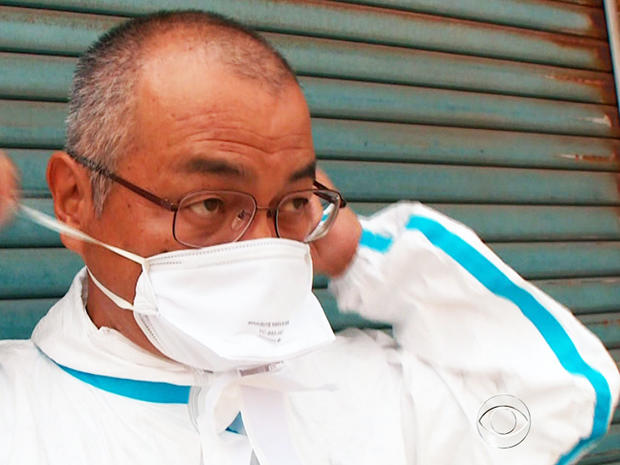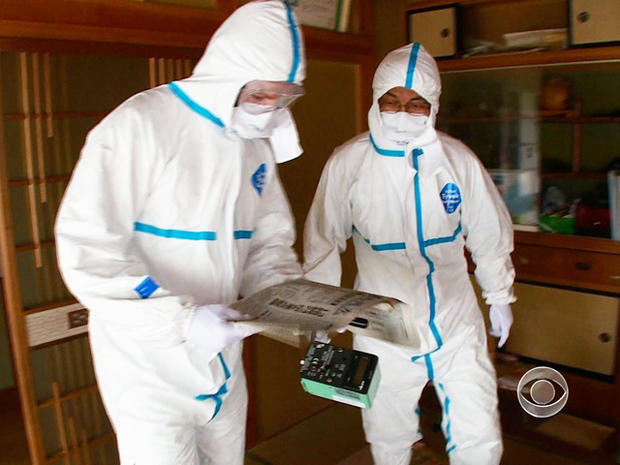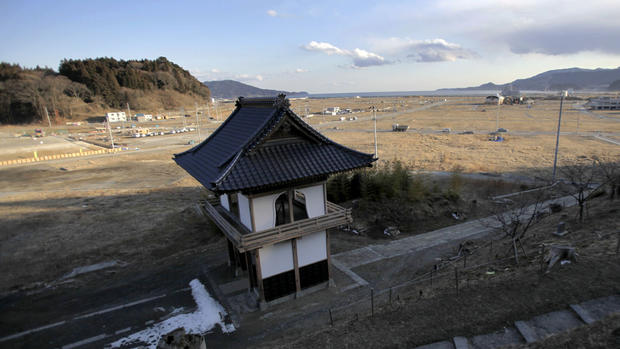Area near Fukushima remains a radiological ghost town
(CBS News) When home is located inside a nuclear danger zone, returning there becomes about checkpoints, equipment and protective suits.
Only residents are allowed in, so CBS News asked Akira Okawara to be a guide. Homeowners can make just 10 trips a year -- no more than five hours each.
"It used to be a very beautiful place," he said or returning home. "It makes me very, very sad."
Vegetation has reclaimed the roads near his home of 50 years. The only sounds were insects and the eerie ticking of CBS News' radiation meter.
Nearly two-and-a-half years later, bills sat unopened in this house occupied only by animals. There was a newspaper from March 11, 2011, the day of the disaster.
"This was the last newspaper we got here," he said.
Okawara and his family thought they'd be gone only a few hours. Pictures of his three kids, laden in radioactive dust, hang in the living room.
"I want people around the world to understand what Fukushima is facing," he said. "And how we're still suffering."
With so many reminders, it was hard to move on.
Laundry sits unfinished in the local laundry mat; the train hasn't rumbled through here in years.
There were around 11,500 people in the town of Okuma who fled when a cloud of radiation engulfed the area, just about two miles from the Fukushima Daiichi nuclear power plant.
Watch: Japanese fishermen face new setback with latest Fukushima leak, below.
Okawara still waits for a decision from TEPCO, the company that owns the plant, regarding compensation for his home.
"I have passed the stage of being angry. What would change if we're angry?" he said. "I just feel like I'm giving up now."
Whenever he returns to Okuma, it's to honor his ancestors. He was the sixth generation to live in this place. He wonders if he'll be the last.
Two-hundred-seventy-five people are still living in temporary housing. Okawara is dying to get into a permanent home, and TEPCO is paying for him and 6,300 other people to work to scrape the contaminated soil. As you drive into the area near his home, you see bags and bags of the contaminated soil lined up along the roadway.



